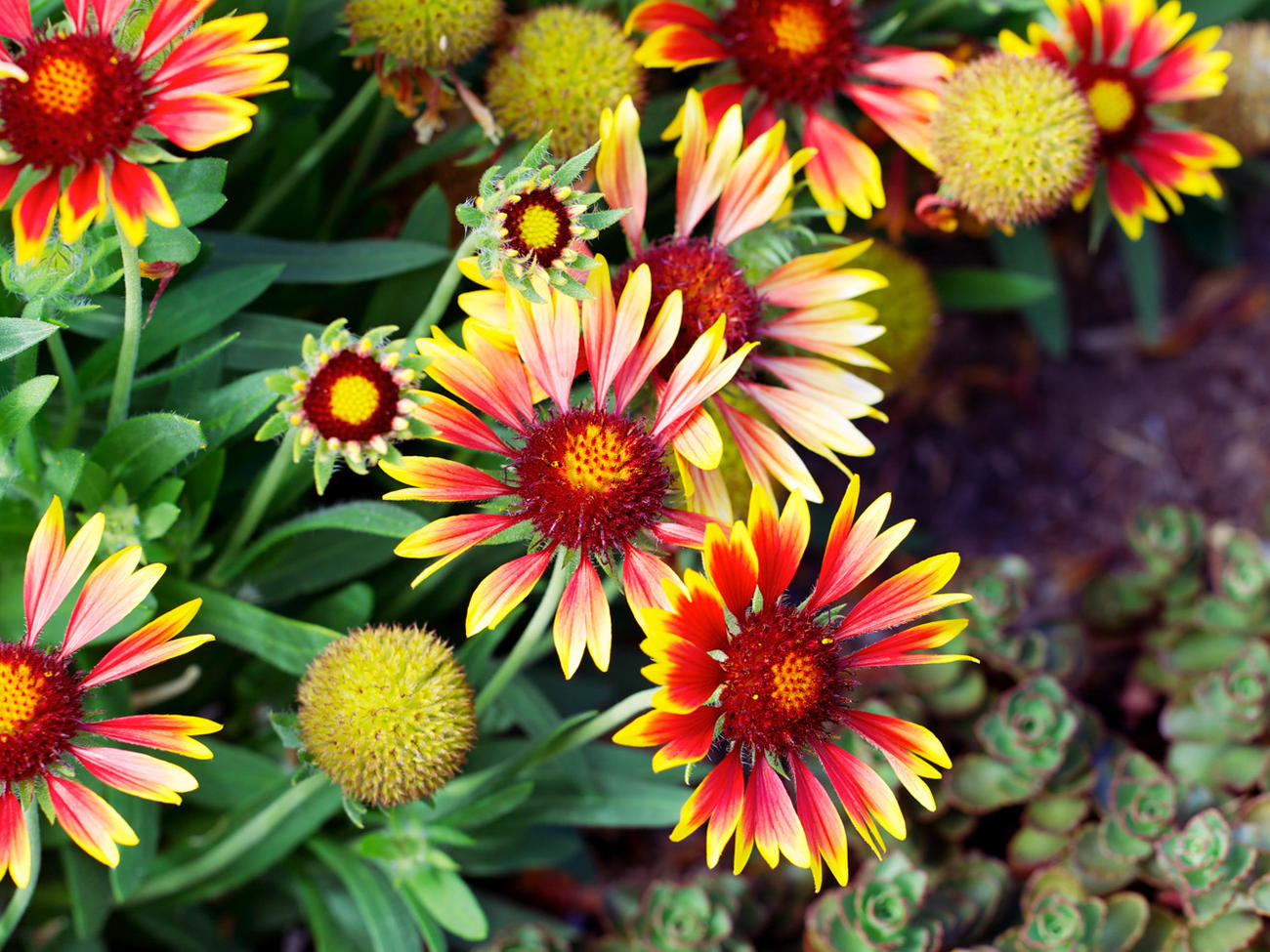Top Drought-Resistant Plants for Gardens: Thriving Beauty in Arid Conditions

In the face of changing climates and unpredictable weather patterns, creating a lush, vibrant garden can seem like a daunting task. But what if you could transform your outdoor space into a resilient oasis that not only survives but thrives in drought conditions? Welcome to the world of drought-resistant gardening, where beauty meets sustainability. Let's dive into the top plants for drought-resistant gardens and explore how you can achieve a stunning, low-maintenance landscape that stands the test of time.
Understanding Drought-Resistant Gardening
Drought-resistant gardening, also known as xeriscaping, is an approach that focuses on conserving water and selecting hardy plants that require minimal irrigation. This method not only saves resources but also creates a more sustainable and eco-friendly environment. By choosing the right plants and employing smart watering techniques, you can enjoy a beautiful garden without the constant worry of water scarcity.
The Benefits of Waterwise Plants
Waterwise plants are those that naturally thrive in arid conditions. They are adapted to survive with minimal water, making them ideal for drought-tolerant landscaping. These plants often have unique features such as waxy leaves, deep root systems, or the ability to store water in their stems and leaves. By incorporating waterwise plants into your garden, you can reduce water usage, lower maintenance costs, and create a more resilient landscape.
Top Drought-Resistant Plants for Your Garden
Succulents: The Champions of Drought Resistance
Succulents are the superheroes of the plant world when it comes to drought resistance. With their fleshy leaves and stems that store water, succulents are a must-have for any drought-tolerant garden. Popular choices include:
- Aloe Vera: Known for its medicinal properties, aloe vera is a hardy plant that requires very little water. Its spiky leaves add a unique texture to any garden.
- Agave: With its striking rosette form and spiky leaves, agave is a showstopper in any drought-resistant landscape.
- Echeveria: These rosette-shaped succulents come in a variety of colors and sizes, adding a touch of elegance to your garden.
Native Plants: Embracing Local Beauty
Native plants are those that are indigenous to your region. They have evolved to thrive in the local climate and soil conditions, making them an excellent choice for drought-resistant gardens. Some popular native plants include:
- Black-Eyed Susan (Rudbeckia hirta): This cheerful flower is a favorite among pollinators and thrives in dry conditions.
- Purple Coneflower (Echinacea purpurea): Known for its vibrant purple petals and medicinal properties, the purple coneflower is a hardy and beautiful addition to any garden.
- Blanket Flower (Gaillardia): With its daisy-like flowers in shades of red, orange, and yellow, the blanket flower is a stunning and drought-tolerant choice.
Ornamental Grasses: Adding Texture and Movement
Ornamental grasses are a fantastic way to add texture and movement to your garden. They are also highly drought-resistant, making them a great choice for low-maintenance landscaping. Some popular options include:
- Fountain Grass (Pennisetum alopecuroides): With its arching stems and fluffy seed heads, fountain grass adds a graceful touch to any garden.
- Blue Fescue (Festuca glauca): This compact grass has striking blue-gray foliage that adds a cool contrast to other plants.
- Mexican Feather Grass (Stipa tenuissima): Known for its fine, wispy leaves, Mexican feather grass adds a delicate, airy feel to your landscape.
Drought-Resistant Shrubs: Structural Beauty
Shrubs provide structure and height to your garden, and many are highly drought-resistant. Some top choices include:
- Russian Sage (Perovskia atriplicifolia): This fragrant shrub produces clouds of lavender-blue flowers and thrives in dry conditions.
- Crepe Myrtle (Lagerstroemia): Known for its vibrant summer blooms and colorful fall foliage, crepe myrtle is a hardy and beautiful addition to any garden.
- Lavender (Lavandula): With its fragrant flowers and silvery foliage, lavender is a classic choice for drought-resistant landscaping.
Tips for Successful Drought-Resistant Gardening
Smart Watering Techniques
Even drought-resistant plants need some water to thrive. Employing smart watering techniques can help you conserve water while keeping your plants healthy. Consider using drip irrigation systems, which deliver water directly to the roots of your plants, reducing evaporation and runoff.
Mulching for Moisture Retention
Mulching is an essential practice in drought-resistant gardening. A layer of organic mulch around your plants helps retain moisture in the soil, reduces evaporation, and suppresses weeds. This can significantly reduce the need for frequent watering.
Grouping Plants by Water Needs
Grouping plants with similar water needs together is a smart strategy for efficient watering. This practice, known as hydrozoning, ensures that each plant gets the right amount of water without wasting resources.
Conclusion: Embrace the Beauty of Drought-Resistant Gardening
Creating a drought-resistant garden is not just about surviving dry conditions; it's about thriving in them. By selecting the right plants and employing smart gardening techniques, you can create a beautiful, sustainable, and low-maintenance landscape that stands the test of time. Embrace the beauty of drought-resistant gardening and transform your outdoor space into a resilient oasis.
FAQs
What are the benefits of drought-resistant plants? Drought-resistant plants require less water, reduce maintenance costs, and create a more sustainable and eco-friendly environment.
Which succulents are best for drought-resistant gardens? Popular succulents for drought-resistant gardens include aloe vera, agave, and echeveria.
Why are native plants a good choice for drought-resistant landscaping? Native plants have evolved to thrive in local climate and soil conditions, making them highly adapted to drought conditions.
How can I conserve water in my drought-resistant garden? Employing smart watering techniques, such as drip irrigation, and using mulch to retain moisture can help conserve water.
What is hydrozoning and why is it important? Hydrozoning is the practice of grouping plants with similar water needs together. It ensures efficient watering and reduces resource waste.


By incorporating these top plants for drought-resistant gardens and following smart gardening practices, you can create a stunning, sustainable landscape that thrives even in the driest conditions. Happy gardening!
0 Response to "Top Drought-Resistant Plants for Gardens: Thriving Beauty in Arid Conditions"
Post a Comment